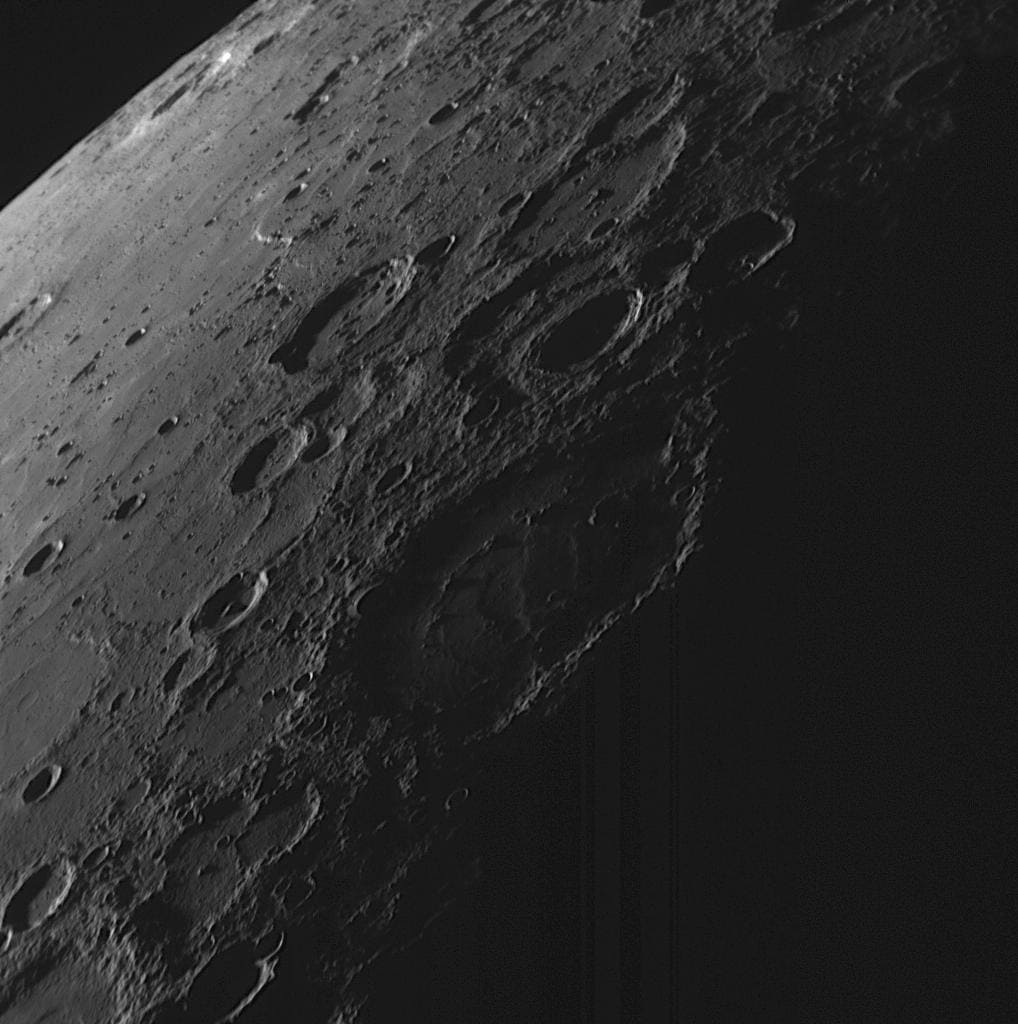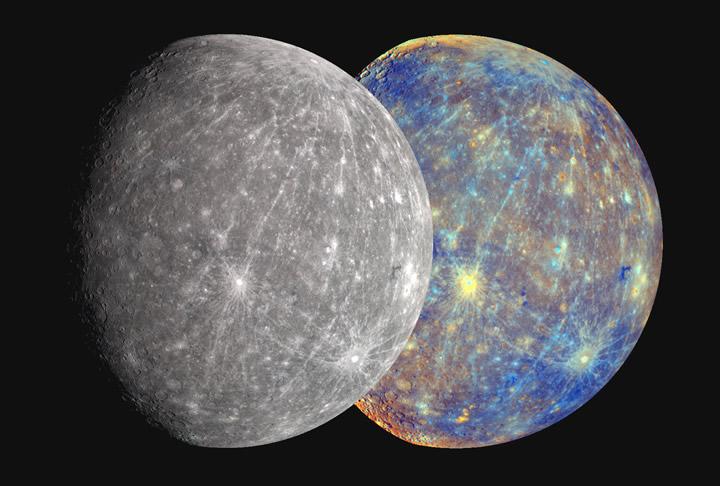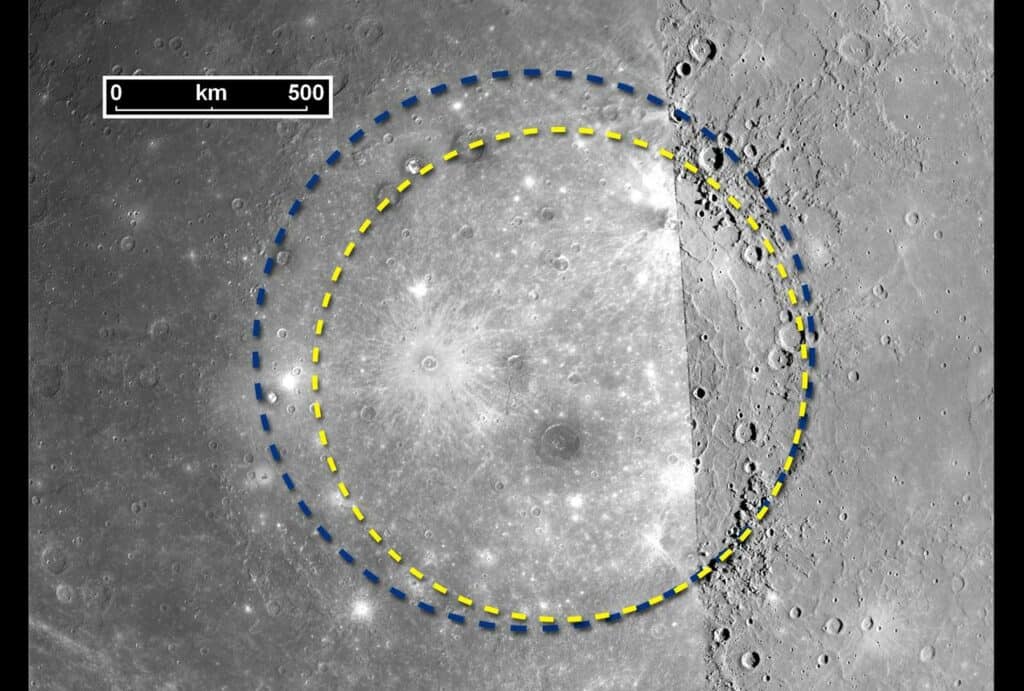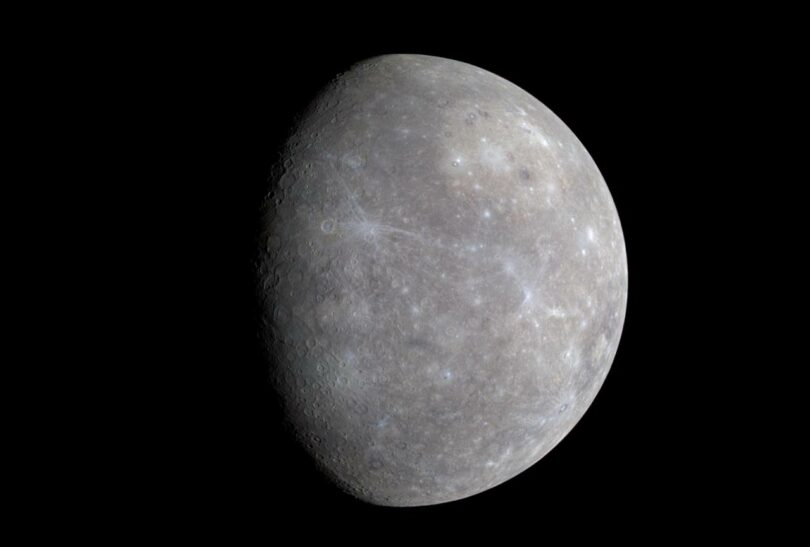As the smallest planet in our solar system, Mercury presents a unique environment that starkly contrasts with our home planet, Earth.
Since it’s nestled so close to the sun, one might assume it’s the hottest planet, but Mercury’s lack of a substantial atmosphere allows temperatures to fluctuate wildly, plummeting to icy cold in the absence of sunlight.
A single day on this rocky world lasts 59 Earth days, and a year whips by in just 88 Earth days. Imagine celebrating a birthday every couple of months!

The surface of Mercury tells a tale of ancient cosmic events, with the Caloris Basin serving as a testament to the planet’s violent past.
This massive crater spans a staggering 1,550 kilometers across, evidence of the colossal impacts Mercury has endured over the aeons.
Our knowledge of Mercury is not merely historical or geological; it extends to the cultural as well.
Named after the Roman messenger of the gods, Mercury indeed zips around the sun with commendable speed, befitting its namesake.
The absence of moons or rings around this planet and its surprising lack of reflectivity add to its distinctive character among the celestial bodies we study.
Getting to Know Mercury
Mercury is a terrestrial planet with a surface that many scientists have compared to our Moon.
With a quick overview of its structure and various characteristics, we’ll explore the unique physical features, dive into its orbit and rotation, touch upon the composition of its atmosphere and temperature ranges, and understand the details regarding its magnetic field and core.
Mercury: Physical Characteristics
Mercury is the smallest planet in our solar system, with a diameter of approximately 3,031 miles, making it only slightly larger than our Moon.

Despite its size, Mercury is surprisingly dense due to its large iron core, which accounts for about 60% of its entire mass.
The rocky surface of Mercury is marked by craters and vast, smooth plains. Notably, one of its most prominent craters is the Caloris Basin.
Orbit and Rotation
Mercury’s orbit around the Sun is the quickest in the solar system, taking only 88 Earth days to complete a year.
A day on Mercury—the time it takes to complete one spin on its axis—lasts 59 Earth days.
Its speed in orbit coupled with its slow rotation leads to a unique phenomenon: it has just one sunrise every 180 Earth days.
Atmosphere and Temperature
Despite being the closest planet to the Sun, Mercury has a thin atmosphere, which means it cannot retain heat and has extreme temperature fluctuations.
In stark contrast, the surface temperature can soar to a scorching 800°F (430°C) during the day and plummet to a frigid -290°F (-180°C) at night.
Magnetic Field and Core
Mercury’s magnetic field is roughly one percent as strong as Earth’s, evidence of an iron core within.
This dynamic core is partially molten, which contributes to the planet’s magnetic field and provides insight into the geological processes that occur on Mercury.
Mercury’s Place in the Solar System
Mercury holds the distinction of being the smallest planet in our solar system as well as the closest planet to the Sun.

Mercury’s orbit is highly elliptical, varying in distance from the Sun from about 46 million kilometers at its closest (perihelion) to 70 million kilometers at its farthest (aphelion).
Compared to Earth’s nearly circular orbit, Mercury’s trek is more stretched out.
In our solar system’s lineup, Mercury sits inside the orbits of Venus and Mars, making it our neighbor to the innermost side. Mercury’s diminutive size makes it only slightly larger than Earth’s Moon.
When observing the planets, Mercury’s proximity to the Sun makes for a challenging viewing experience.
However, with careful timing and the right telescopes, we can observe Mercury during twilight hours when it’s far enough from the Sun’s glare.
Exploration History Of Mercury
Our quest to understand Mercury has a storied exploration history beginning in ancient times.
The Babylonians recorded observations of the planet over thousands of years ago.
In modern space exploration history, NASA has sent multiple spacecraft to visit this elusive world.
The Mariner 10 mission, for instance, was the first to provide us with close-up images of Mercury during its flybys in the mid-1970s.
More recently, the MESSENGER spacecraft orbited Mercury, sending back a wealth of data and mapping its surface.
Another mission, jointly conducted by the European and Japanese space agencies, called BepiColombo, is currently en route to further our understanding of Mercury.
What Are Mercury’s Unique Surface Features?
Mercury’s surface is a testament to its unique place in the solar system.
It’s heavily cratered, much like our Moon, showing a long history of impacts. Among these features is the Caloris Basin, one of the largest impact basins in the solar system with a diameter of about 1,550 kilometers.
This basin was created by an asteroid impact so powerful it left ripples across the planet’s crust.

Credit: NASA/Johns Hopkins University Applied Physics Laboratory/Carnegie Institution of Washington/Brown University
The planet has no moons and virtually no atmosphere to speak of; this means that its surface endures the most extreme temperature swings in the solar system, ranging from blistering heat to icy cold.
During the day, temperatures on Mercury can soar to a scorching 430°C (800°F), yet at night, without an atmosphere to retain that heat, temperatures plummet to a frigid -180°C (-290°F).
Hidden in the shadows of Mercury’s craters, particularly at the poles, water ice has been found.
This discovery is remarkable given the temperature range and proximity to the Sun, making Mercury a body of celestial extremes and geological surprises.
How Did Mercury Get It’s Name?
The name ‘Mercury’ comes from the Roman god Mercury, a deity associated with speed and trade.
Drawing parallels between the planet’s swift orbit around the sun and the fleet-footed Roman messenger, ancient astronomers thought it fitting to name this quick-moving celestial body after the god.
In fact, Mercury dashes around the sun faster than any other planet in our solar system, completing one orbit approximately every 88 Earth days.
Similarly, Mercury’s ability to appear swiftly in the evening and morning sky led to its association with Hermes, the Greek counterpart to the Roman Mercury, acclaimed for his swiftness.
Our understanding of Mercury is thus enriched by both its physical attributes and our own histories of mythology.
Frequently Asked Questions About Mercury
What are the main components that make up the planet Mercury?
Mercury is primarily composed of a large iron core surrounded by a silicate mantle and crust. This gives Mercury the distinction of having the highest iron content among all the planets in the solar system.
How does Mercury compare in size to other planets in our solar system?
Mercury is the smallest planet in our solar system, even smaller than some of Jupiter’s and Saturn’s moons. When compared to Earth, Mercury’s diameter is about 38%, making it only slightly larger than Earth’s moon.
What is the average temperature on Mercury, and how does it vary?
The surface temperature on Mercury experiences extreme fluctuations. During the day, temperatures can soar up to 800°F (430°C), while at night, they can plummet to as low as -290°F (-180°C), due to the absence of a significant atmosphere to retain heat.
Does Mercury have any moons, and if not, why is that the case?
Mercury does not have any moons. The prevailing theory for this absence is that its proximity to the sun’s intense gravity makes it difficult for Mercury to capture or retain any natural satellites.
In what ways is Mercury believed to be changing or shrinking over time?
Mercury is believed to be shrinking as its core cools, causing the surface to contract. This contraction has resulted in the formation of ridges and cliff-like features called scarps across the planet’s surface.
Lesser-known facts about Mercury?
One interesting fact about Mercury is that it has a very thin atmosphere composed of elements like oxygen, sodium, and hydrogen. Additionally, despite its small size, Mercury has a magnetic field, which is often associated with much larger planets.


